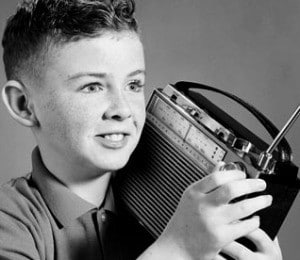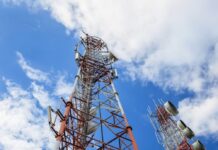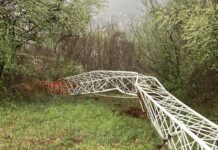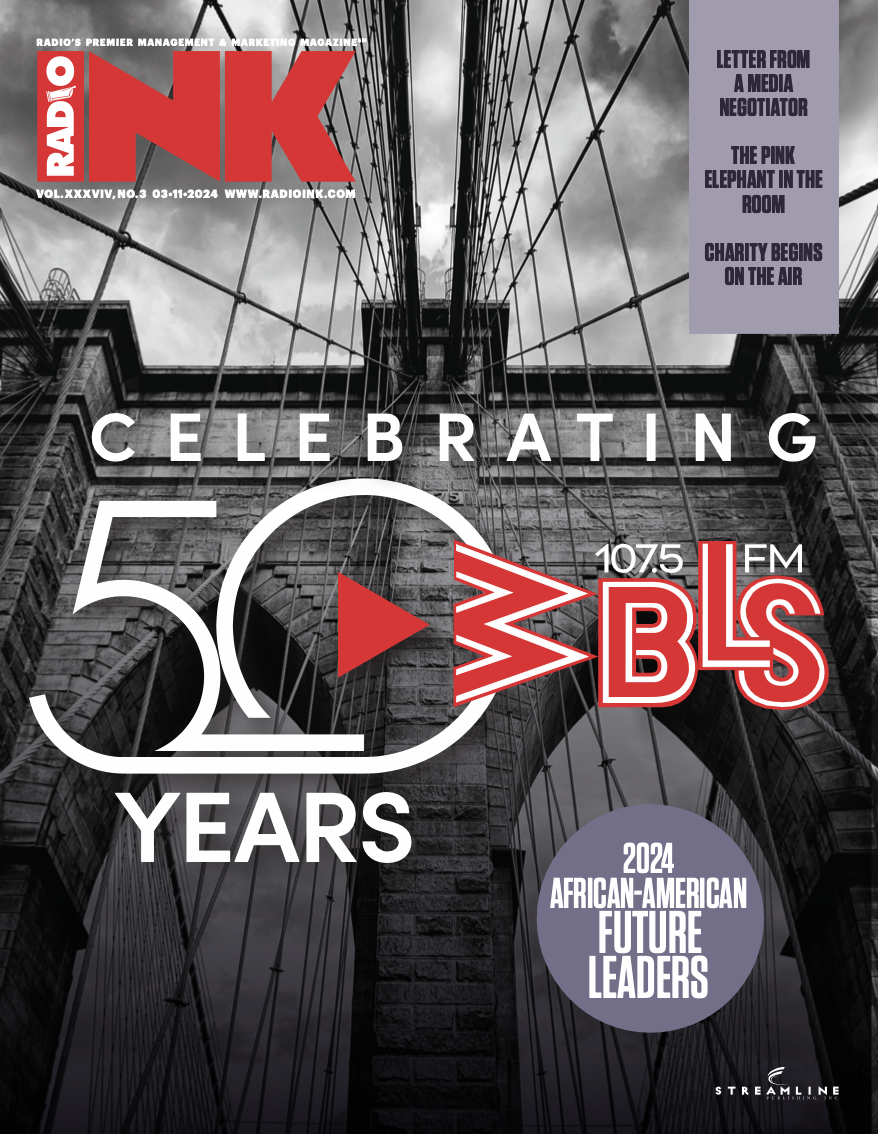
(By Robert Lee) “Mr Lee, pull your head out of your ass,” said Christopher Boone, licensee, here in Texas, of KLLS — an AM station — and one that ended up lying in ruins, because of the historical Hurricane Harvey, which devastated South and Southeast Texas last year. Sadly symbolic. All in all, I understand his blasting me.
“Saying you’re revitalizing AM stations by putting them on FM is a joke. That’s like saying, ‘We’re going to save Ford by giving everyone a Chevy.’” That from Scott G.
I knew my “Kill AM” proposal would pluck an emotional chord in some “senior band” aficionados, and it did, as it always does when I bring it up. So, following is my response to some of those who replied to my original column. (Thank you, by the way!)
“It seems to me that the addition of an FM translator for a zero-value AM operation is only going to perpetuate the AM death march.” That observation, by Warren Schulz, was the best of the comments, well summarizing what I see as the state of AM radio in our country. First, the AM operations of today, I believe, have become, indeed, zero-value “thanks” to a negligent FCC. Borrowing from the comment of Bob Weller, there are ALREADY “zillions” of electric and Part 15 and Part 18 electronic devices and sources out there, with their “noise floor” onslaught that has permanently damaged the AM band. And, there is no putting those “zillions” back in the tube. It’s just too late for that. And, yes, the Band-Aid FM translators do, precisely, “perpetuate the AM death march.” As I said, FM translators do exactly NOTHING to fix the technical problems that AM stations face from the noise floor bombardment. FM translators simply ignore the AM death. Some AM-on-FM translator licensees even admit the obvious, by advocating that they be allowed to turn off their AMs, return the worthless AM license to the FCC, and continue on as a 250-watt FM station. They know what they’re talking about, being very aware that a 250-watt FM translator, mounted a thousand feet up, can provide coverage equivalent to a full-power Class A FM…at a fraction of the cost.
As for the observations about the supposed non-availability of the Channels 5 and 6 spectrum in places like Philadelphia and Milwaukee: The same computer software that the Media Bureau is using to determine the post-Incentive Auction TV channel assignment repack can be used to find alternate channels for the full-power and Class A stations on 5 and 6. As Doug Smith commented, “I can assure you ABC would rather not be on physical channel 6 in Philly!” He is right. No full-power or Class A TV station wants to be assigned to the ‘low-V’ 2 – 6 channels. Additionally, “low VHF” also includes Channels 2, 3, and 4, for continued television use by low-power and TV translator stations, freeing up 5 and 6 for all-digital, expanded-band FM radio. As the TV repack process shows, digital broadcasting allows for much tighter spacing and allocation of TV stations.
Finally, the ongoing TV repack should only protect primary, full-power, and Class A TV stations. From the start, licensees of secondary-service LPTVs and TV translators have always been warned, in the written rules, that their stations may be forced to relocate or even shut down in favor of full-power TV services. (The same rule applies to secondary FM services – translators, boosters and LPFMs – in relation to full-power FMs.)
I could write a response twice as long or longer than this, but a word limit sensibly applies at Radio Ink. I would very basically conclude that there are no technical or engineering limits to creating an expanded FM band on the Channels 5 and 6 bandwidth. The only limits and roadblocks are political, not actual. AM radio, however, is gone, technically and engineering-wise. So, let’s get on with all-digital, expanded-band FM radio!
Robert Lee is the Owner-President, QXZ MediaWorks LLC, Dallas, Texas and can be reached at [email protected]







AM radio will need the FCC to force manuafacturers to build quality receivers again. There are AM car radios that so bad they make my ears hurt. A few sound nearly as good as FM. The technology to make A.M. sound very good has been around for a long time. I agree with those who say that AM is very valuable and should not be abandoned.
Ummm… ABC is on physical channel 6 in Philly because they WANTED TO STAY THERE…
Please, Jay, enlighten us on how you know that. The folks at ABC are smarter and more informed than that…
I’m thinking that ‘Jay’ does not know the difference, with digital broadcasting and set tuning, between ‘physical’ TV channels and ‘virtual’ ones…
WPVI-TV (ABC Philadelphia) is on BOTH physical (RF) and virtual channel 6. Before the digital transition was completed in 2009, their digital transmitter was on channel 64. But that channel is outside the core (channels 2-51), as it existed back then and there were no other UHF channels available for WPVI-DT, so they went back to their analog channel, which is channel 6. WRGB, Schenectady, NY, is another TV station that is on both physical and virtual channel 6. Many other stations had to move to channel 6 as a result of the TV spectrum repacking caused by the “incentive auction”, which is allocating channels above 37 to wireless broadband and other nonbroadcast services. Channel 36 is the highest channel currently available for television use. Channel 37 is reserved for radio astronomy.
As I said, Phil, secondary video services, i.e., LPTVs and TV translators, would have to yield to full-power and Class A TVs, by moving to another channel in that core of Channels 7 through 36, or to one of the ‘low VHF’ Channels 2, 3 or 4.
As I also said, secondary services, in both terrestrial TV and radio, were always granted their licenses with the clear understanding and requirement that they may have to yield to a full-power, primary station. That could be invoked in markets like Philadelphia or Schenectady, where needed.
“…freeing up…”: A phrase used by people who have only inexact technical knowledge to describe what should be done with a set of frequencies that they have their eyes on, but which are already used by someone else. “…freeing up…” will be the death of satellite program distribution which feeds thousands of radio stations, both AM and FM, today.
AM’s Radio sound quality and noise interference are killing this AM radio technology, and sooner or later, even the most successful radio signals of today, they will suffer the same faith if they don’t do some thing soon: Extinction. AM radio’s core engineering is based on a 100 year old technology who haven’t had any major facial lift in the last 100 years. The only way to save the AM radio stations is by migrating them to another band with less interference and better sound qualities, and yes, it will require a huge amount of effort from the broadcasting industry in order to create the infrastructure to develop radio devices who will pick the new commercial band, but the rewards could be huge as well while the AM band can be allocated for local community groups, churches, or municipalities.
It can be done, but it will require less bureaucracy from the FCC and real broadcasters who may have the guts to understand the reality of our days. The AM radio technology is as old as the model T. The Model T evolved to a huge variety of cars, colors, models, manufacturers, and brands while AM radio is functioning under the same principles, and the vast majority of them are just not cutting it no more.
AM radio needs to build the infrastructure today, so it won’t be extinct tomorrow.
Thank you for your positive and thoughtful responses, Joel. I appreciate your addressing the issue I am raising, which is about the technical problems that face AM radio, and leaving the programming content debate for another, totally different discussion, where it belongs.
Speak for yourself. I am billing 45-50 K on an AM in a small, resort market. Fix your own problems, quit pulling stuff out of your behind to be provocative!.
Not All the AM’s are billing 40k to 50K on an AM in an Small Market, there are few AM’s who are doing very well like KOA here in Denver, but we are talking about the vast majority of AM radio stations who are techically done. Those are the ones who need to migrate to new channels if the FCC really wants to revitalize this obsolete radio spectrum.
I am being very genuine, Dave, when I say “congratulations” to you for billing $45-50K per month in a small market. I don’t know which market you’re in, but, if you’re achieving that while facing other competition, then that’s even more impressive, for a small market.
Having said that, I am not trying to be provocative in the negative connotation of the word. The major interference to the AM band is a very real technical problem, for all AMers. I don’t know which AM station yours is, but, I can say with 100% certainty that your station is not getting the same geographic coverage that it did as recently as, say, 10 years ago…that’s how much the ‘noise floor’ creep has grown…everywhere, and at every AM station. Even the 50,000-watt Class A boomers complain about it. So, now, the FCC is creating a new problem by burdening the FM band with well over 1,000 new translators for AM stations.
It may be unfair to AM owners that the FCC did not do its job to stop the electromagnetic interference, starting years ago, but it’s not fair, either, that the Media Bureau is now in the process of ruining the FM band. That is ridiculous, on both counts!
I wouldn’t say the demise of AM is the FCC’s fault. More like death of a thousand cuts. It’s a confluence of many factors detrimental to AM over at least four decades. The major factor is the deteriorating and horrid audio quality due to restricted frequency response, distortion, and fast AVC (AGC) in cars, none of which are subject to FCC regulation. Blame receiver mfgrs.
The countless sources of today’s interference have long since been beyond the ability of the Commission, or anyone else, to possibly stay ahead of. Of course, this merely cuts down on an AM’s useful service area. And even next to the tower, AMs almost always sound horrid on today’s radios. Heard WCBS lately? Perhaps due to PPM enhancement, it sounds so bad in analog as to be fatiguing and virtually unlistenable to ears accustomed to FM. And IBOC annoyingly jumps in and out except close-in.
Seem to me the solution has got to be to phase in a plan to get AM licensees off the standard band and employing modulation of other than carrier amplitude. Cross-service translators are a great fix. They’re not about “fixing AM” so much as preserving the service to the public provided by the programming provided by the entities that operate those AMs.
Actually, Dennis, the FCC has always had enforcement power over the radio device manufacturers, under the Parts 15 and 18 regulations (mainly). The FCC did not do its on-the-books job.
Manufacturers that are not audiophile-level producers will not do, mainly for cost savings, what they are not directed to do.
So, now, as I’ve said, it is way too late to correct the interference-to-AM problems, since there are now billions — no, that is not an exaggeration — electric and electronic devices and sources that wreck AM station signals. And, the solution that you propose in your final paragraph will cost stations and consumers big, big bucks for replacement equipment. Better that these AM stations spend that money, instead, on the superior FM bandwidth, in all-digital.
Early on many saw the Cellular industry as suspect while they were touting Cellphones as the new transistor Radio. Post WWll saw creation of CONELRAD (Control of Electromagnetic Radiation) to become EBS Emergency Broadcast System which running from 1963 until 1997 to be replaced by the subsequent EAS (Emergency Alert System). Rampant growth of handheld devices was envisioned for addressing the public in times of emergencies. Unfortunately the nations cellular infrastructure suffers from massive failures when national calamities occurr. Knowing this FEMA determined that ONLY AM Radio has the reach and reliability for disseminating vital information during times of Emergency. FEMA’s filed comments with the FCC stressing the “significant” footprints of Class A stations was the reason the designated 25 such stations (signals) as “Primary Entry Points”. I’ve spent my life working with AM Radio and still believe in MW and continue doing the best to make the box speak. I do not know how the commercial viability of AM will play out, but I sleep well in knowing that FEMA gets it and knows that when push comes to shove AM radio will save our bacon.
AM stations are no longer the only PEP stations, Bruce. There are many, many FM PEP stations around the country. In fact, the Federal government and FEMA have a particular arrangement with the National Public Radio stations, the vast majority of which are on FM, for PEP alerts and messages.
Robert, thank you for your stance. I agree with you completely. To say that we should not make a major technology change because not everyone already owns that technology is what we have been doing for the last 20 years in radio, and you can see how far it has gotten us. If we continue to do the same things, we will continue to get the same results, and we will deserve them.
Thank you, Randy.
But, I would alter your “If we continue to do the same things” view to “If we continue to do worse things”, insofar as damaging the current FM band by jamming it with more and more FM translators, to try to ‘save’ the AM band. Government bureaucracy ‘logic’ of the worst kind!
The FCC mandated the conversion of broadcast TV from analog to digital, and it can and should do the same with the establishment of an all-digital, expanded FM band. Normally, philosophically, I believe in leaving things to the free market to solve, but, broadcasting is different, since it uses defined and limited spectrum, which must be regulated to prevent the ‘Wild West’ recklessness that nearly destroyed radio in its infancy. Remember the 1980s free market adoption of AM stereo? Four or so competing AM stereo standards left us, effectively, with NO AM stereo. I could go on and on…
“The FCC mandated the conversion of broadcast TV from analog to digital, and it can and should do the same with the establishment of an all-digital, expanded FM band.” Why does it have to be digital, with its high receiver costs and proprietary systems? Digital is not the holy grail. Listen to the “skipping CD” effect on your digital cellphone as you enter a dead spot. Major Armstrong proved that regular analog FM works fine back in 1938. The capture effect allows co-channel stations to be packed closer together on FM.
Another possible home for expanded FM could be the original FM band, 42-50 MHz. But some public safety radio systems still use that band and it may still possibly be used in the IF chain of TV sets. Any change or expansion of FM allocations would come with the necessity to buy new radios…although the firmware in certain car radios could be programmed to include this band.
There’s also a 4 MHz space between TV channels 4 and 5, 72-76 MHz, but that is occupied by a variety of fixed and mobile services, with a large chunk of space being used by radio astronomy.
AM is far from dead. A vast, loyal, thinking, thirsty audience listen for talk… ideas, knowledge, news, political opinion, sports, religion, etc. With minimal creativity AM could be dynamite and beat the pants off FM. For example, why has nobody yet come up with a 24/7 national all-news network? Tons of fascinating, compelling, vital stories and hot topics get ignored… can’t fit them into 5 minutes on the hour, minus ads. Our high calling is to inform and educate, not just entertain at the lowest common denominator to make a fast buck.
Teach people to laugh again. What ever happened to good humor? Where’s the humor network? …clean, fun and funny, family friendly humor would draw millions. A rare local radio does it with success.
I spend long lonely weeks in the car, driving coast to coast, searching. Commercial FM is the pits. Nothing there to keep me awake. Commandeered by “music” addicts, and reduced to a dozen clanging, nerve racking “rock and racket” formats or painfully morbid “country,” FM has little variety. Everybody shoots for the same low-intelligence market. Yet the world is full of magnificent, beautiful music, voices and great ideas that never get heard on radio. Diverge! Explore! Pioneer! Forget what’s hot and pop. Ignore your bottom line for a few years while you create the next great wave of music and talk radio! It can’t come soon enough.
You are addressing the ‘apples and oranges’ issue of AM station content and programming, Ron, while I am speaking of the technical and engineering issues that are destroying those AM stations. If an AM station is successful with its content, that station would move all of the same programming to the new FM station.
Robert, we essentially agree on the technical issues. AM has gotten the shaft since FM took off in the 70s. Yet, aside from thumpity-thump “music” freaks who can hardly spell “radio”, when content is compelling, a listener with his head screwed on straight could care less how he receives it: AM, FM, HD, DRM+, DAB+, or a silly cell phone. He/she will go out of his/her way, stretching the ear to hear (even hold the radio just right, or stop the car) because what’s being said is really important… valuable, life transforming ideas that really matter, that give perspective to this crazy up-side-down age. They listen through all levels of AM static, noise and skywave interference to hear what’s vital, or even genuinely amusing, if they can’t conveniently get it somewhere else and free. With or without perfect technology, I’m convinced programming remains the game changer. And I’m not hearing much on either AM or FM to wean me away from my smartphone’s zillions of alternative choices.
” For example, why has nobody yet come up with a 24/7 national all-news network?” Been there, done that. NBC had a national all-news network called NIS (News and Information Service) in 1975. Many of its affiliates were FM stations, as FM was the sorry sister back then. But NIS failed because it was very stingy on local avails. It only gave eight minutes to the affiliates…for local news, weather, and commercials. A national all-news network might work today, if its owner(s) learn from NBC’s mistakes.
The “sorry sister” FM was an important factor in NIS’ demise for one failure to make a leap of faith.
NBC relegated NIS to their O&O FMs in every market but one, then ran spots on their still-music AMs that “now there’s an all-news station on FM!” … to which the audience collectively said “why?” and stayed tuned out en masse. Meanwhile, on WRC in Washington DC, NIS on AM went to all-time highs in its ratings history. Yet NBC failed to take note on that, even as potential affiliates backed off because the network wasn’t committing itself completely.
There was also the issue of NIS using the same network lines as its parent, which meant huge “must-fill” holes at the top and bottom of the hour. I found this blog which includes the NIS clock:
http://acrnewsfeed.blogspot.com/2016/06/the-incredible-true-story-of-nbcs-247.html
And I note that it had 21 minutes of local option time, in addition to the 13 “must cover” minutes. The option time had nine commercial minutes an hour and the mandatory local time presumed another five. That’s a far cry from the eight minutes you remember, Phil.
But then, who of us remembers that clearly something from 40 years ago?
Phil, your spot on. Mistakes were made, spooking board rooms, delaying a sorely needed service. But 1975 was 43 years ago. Old wounds should have healed. Time is ripe to do it right. It also means bringing back authentic journalism, not just deep throats dutifully reading out slanted scripts from AP and Reuters.
Ron, I like your thinking very much although I am only a retired broadcast engineer with more than thirty years on both sides of the mic, and consequently, an old guy and out of touch with “modern” sensibilities. I must comment on this. AM is indeed a troubled technology–but the band provides an awfully efficient way to talk across large distances. It has huge intrinsic value. The services you describe could certainly be done–again, as they were in the old days–with modern technologies. Mr Lee’s position that he is only referring to the technical side ignores the fact that the technical and content sides of this issue cannot be separated, if our objective is truly to discuss the surviveability of the MW industry.
So…as I see it with regard to 24/7 news coverage for instance, the problem is not the delivery mechanisms, or the market for such, so much as the lack of content available (read, “real journalism”). A similar argument applies to the other ideas you propose.
The small market operations that I know of that are doing a decent job of serving their market with decent content are doing OK–not getting rich perhaps, but OK.
The fundamental problem, imho, is that it costs a lot to generate REAL content! We have been replacing talent and ideas and news-gathering and relevance with generic satellite feeds and play lists assembled from computer-generated statistical inputs for decades. Hence, your long, boring cross-country drives.
Technologically, we are awash in answers. The difficulty is in asking the right questions. We cannot answer those questions without considering content. Without content that means something to the listener, there is no technological answer to the demise of radio, AM or otherwise.
Or TV for that matter. It is all currently a vast “wasteland” as far as I am concerned. And that takes us to a discussion of the cultural values in this country–and that is an entirely different topic. Thank you for your patience.
“For example, why has nobody yet come up with a 24/7 national all-news network?”
Beyond NBC’s ill-fated NIS, there’ve been, at the very least, the AP’s “All-News Radio” (also known by its generic on-air branding, “The News Station”), from roughly the mid-’90s to the mid-2000s; the Westwood One-distributed audio feed of CNN Headline News, which also lasted into the mid- or late 2000s; and, more recently, TRN’s “America’s Radio News Network” (which, granted, was more talk-based than the others).
Today, many of Bloomberg’s long-form radio programs have at least some outside carriage–and SiriusXM has the exclusive “Fox News Headlines 24/7” (separate from the simulcasts of the cable networks). And, that doesn’t get into the online-only outlets from, say, iHeartRadio and Newsy/TuneIn.
You’ve not answered the biggest question. Suppose you relocate AM stations to a new FM band, assuming you could make channels 5 and 6 available. How are you going to make people buy new radios to hear them, when no one is buying them now? Gee, let’s make a brand new deluxe horse carriage. In the age of Alexa, you expect people to carry their phone AND a Walkman to get a few local stations? (I know…..unique local programming that you can’t get anywhere else because somehow Q82 isn’t going to stream). If this were 1985 this proposal would make sense (though the FCC would screw it up).
I’m 28 (a so-called “millennial”) and really love AM radio. I have listened to it for most of my life. The main limitation is listening inside of some office buildings with large amounts of computer equipment. That is it. Medium Wave AM signals travel farther and remain popular in Midwest markets. Just because one unknown magazine writer thinks it is over doesn’t make it true. In the 1980s, it was said AM radio was dead unless it switched to stereo. Rush Limbaugh proved those pundits wrong. I spoke to an AM station owner in Northwest Iowa, he told me it was all about content. The station is still on the air and was doing well back then when I talked to him in 2016. If anything is killing AM radio, it is corporate mismanagement. The individuals calling for the AM band to be disbanded likely do not work in radio broadcasting. These are people focused only on advertising revenue. Advertising will continue no matter what, because there are still many business who can use AM radio to reach an audience. And just remember, radio didn’t start picking up advertising until about 30 or so years after it had been invented. And yet somehow it survived.
Radio King: I work in radio broadcasting. I began in 1995. And, ‘advertising revenue’ is literally the bottom-line necessity that keeps free-to-listeners radio working.
And, you get your radio history wrong, too. From the beginning, there was live-read advertising and underwriting on radio. This newfangled thing called the Internet has thousands of sites with audio files of radio programming — and live-read advertising — for your entertainment pleasure.
But, seriously, those of us who work in radio broadcasting are obviously delighted that there are still a whole lot of Millennials like you who actively listen to terrestrial radio…thank you for that. We broadcasters look forward to serving you.
Radio King, you said, “If anything is killing AM radio, it is corporate mismanagement. The individuals calling for the AM band to be disbanded likely do not work in radio broadcasting. These are people focused only on advertising revenue. Advertising will continue no matter what, because there are still many business who can use AM radio to reach an audience. And just remember, radio didn’t start picking up advertising until about 30 or so years after it had been invented. And yet somehow it survived.”
That is one of the most intelligent things I’ve read her so far! It is also why I would like to see the FCC allow for a small broadcaster’s permit for owners of marginal facilities (i.e. daytimers with 5,000-watts or less, many if not most class IV (Class C) stations as well as most Class III-S stations (class Ds on regional channels). My plan would offer owners of such facilities that own no other facilities to operate with less overhead to the FCC; perhaps one-tenth of what a larger operator might incur.
Now regarding advertising, some broadcasters might want to look to alternative advertisers or look to alternative sources of revenue for operations. Some formats are not ‘advertiser-friendly’ but can raise revenue from other sources.
Can we get to the elephant in the room being ignored? ALL terrestrial radio, even on an expanded, digital FM band, is in mortal danger due to demographics. Ad dollars are moving online at a greater and greater rate. Unless your programming truly serves your community, or at least a large niche audience, you have one foot in the professional grave. It will take the most creativity since the dawn of radio to figure out how to keep it from going over the brink.
So, why are there CHR stations, Jody? I think it’s reasonable to believe that there are still sizable amounts of young listeners to young formats.
Robert Lee, simply, is a bozo. Just for reasons of of civil defense and emergency preparedness, he once again shows his thorough ignorance. Why you people have granted him the space to, again, expose his thorough lack of knowledge is beyond me.
Please…not all voices are worthy of being heard. Robert Lee certainly is not.
Thank you, Walter, for sharing your thoughtful solutions with us for the very real technical and engineering problems that AM radio faces.
Oops, my bad…your empty response is only one of name-calling.
I’m certain, if you have something substantive to say on the issue, Radio Ink would also publish a column from you. This space is supposed to be about genuine debate, not disrespect.
Good response Robert! While I agree with your conclusion that the noise floor is the ‘real’ issue behind the troubles in AM broadcasting, others have made points about the technical quality of the broadcasts AND (here’s the kicker!) the quality of the programming that also need to be addressed if broadcasting is to be saved.
I DISAGREE with the ‘conclusion’ that radio is ‘dead’ — but it IS on ‘life support’ and likely to die if this ‘trifecta’ of issues is not addressed IN TOTO. Addressing any one of the three alone is not enough — it will take all three, and unfortunately, the way the FCC works today, NONE of them is likely to be addressed. If we return to the concept of PICaN we MIGHT get there, but that is a stretch in today’s Washington.
Does ANYONE have a real way to get there? THAT concept would be worth some ‘ink’ in Radio Ink!
Congress has funding and oversight control over all Federal agencies, including the FCC. I am really thinking, more and more, that the mandate(s) may have to originate on Capitol Hill, if the FCC can’t seem to — or really want to — figure things out on its own…